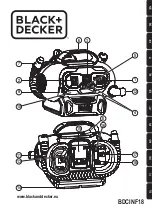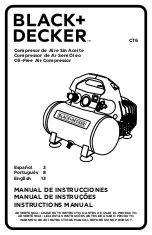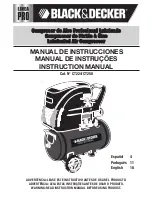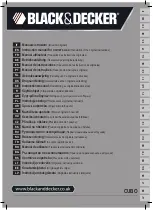
ShopTek™ ST45, ST55, ST75 (U.S.A. & Mexico) Operation & Maintenance Manual
1: Safety
88292021-240 R01
Subject to EAR, ECCN EAR99 and related export control restrictions.
9
E.
Make sure all personnel are out of and/or clear of the
compressor prior to attempting to start or operate it.
F.
Disconnect and lock out all power at source and ver-
ify at the compressor that all circuits are de-ener-
gized to minimize the possibility of accidental start-
up, or operation, prior to attempting repairs or adjust-
ments. This is especially important when compres-
sors are remotely controlled.
G.
Keep hands, feet, floors, controls and walking sur-
faces clean and free of fluid, water or other liquids to
minimize the possibility of slips and falls.
1.6
Hot surfaces, sharp edges and
sharp corners
A.
Avoid bodily contact with hot fluid, hot coolant, hot
surfaces and sharp edges and corners.
B.
Keep all parts of the body away from all points of air
discharge.
C.
Wear personal protective equipment including gloves
and head covering when working in, on or around the
compressor.
D.
Keep a first aid kit handy. Seek medical assistance
promptly in case of injury. DO NOT ignore small cuts
and burns as they may lead to infection
1.7
Toxic and irritating substances
A. DO NOT
use air from this compressor for respiration
(breathing) except in full compliance with OSHA
Standards 29 CFR 1910 and/or any applicable Fed-
eral, State or Local codes or regulations.
B. DO NOT
use air line anti-icer systems in air lines
supplying respirators or other breathing air utilization
equipment and
DO NOT
discharge air from these
systems into unventilated or other confined areas.
C.
Operate the compressor only in open or adequately
ventilated areas.
D.
Locate the compressor or provide a remote inlet so
that it is not likely to ingest exhaust fumes or other
toxic, noxious or corrosive fumes or substances.
E.
Coolants and lubricants used in this compressor are
typical of the industry. Care should be taken to avoid
accidental ingestion and/or skin contact. In the event
of ingestion, seek medical treatment promptly. Wash
with soap and water in the event of skin contact.
Consult Material Safety Data Sheet for information
pertaining to fluid of fill.
F.
Wear goggles or a full face shield when adding anti-
freeze compound to air line anti-icer systems.
G.
If air line anti-icer system antifreeze compound
enters the eyes or if fumes irritate the eyes, they
should be washed with large quantities of clean
water for fifteen minutes. A physician, preferably an
eye specialist, should be contacted immediately.
H. DO NOT
store air line anti-icer system antifreeze
compound in confined areas.
I.
The antifreeze compound used in air line antifreeze
systems contains methanol and is toxic, harmful or
fatal if swallowed. Avoid contact with the skin or eyes
and avoid breathing the fumes. If swallowed, induce
vomiting by administering a tablespoon of salt, in each
glass of clean, warm water until vomit is clear, then
administer two teaspoons of baking soda in a glass of
clean water. Have patient lay down and cover eyes to
exclude light. Call a physician immediately.
1.8
Electrical shock
A.
This compressor should be installed and maintained
in full compliance with all applicable Federal, State
and Local codes, standards and regulations, includ-
ing those of the National Electrical Code, and also
including those relative to equipment grounding con-
ductors, and only by personnel that are trained, qual-
ified and delegated to do so.
B.
Keep all parts of the body and any hand-held tools or
other conductive objects away from exposed live
parts of electrical system. Maintain dry footing, stand
on insulating surfaces and
DO NOT
contact any
other portion of the compressor when making adjust-
DANGER
Death or serious injury can result from inhaling
compressed air without using proper safety
equipment. See OSHA standards and/or any
applicable Federal, State, and Local codes, stan-
dards and regulations on safety equipment.










































